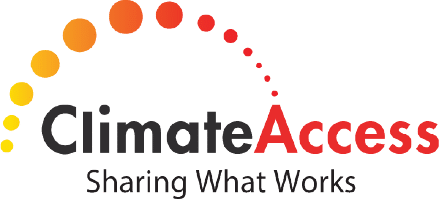The key, according to DeSmogBlog editor Richard Littlemore, is whether you can live with your decisions. Although it felt “tantamount to walking up to a power line,” he remains quite at peace with the decision last month to publish documents revealing the Heartland Institute’s strategy to undermine climate science in the classroom and the media and to keep them published in the wake of climate scientist Peter Gleick’s admission that he had acquired the documents through false pretenses.
“I would do it again—to put out accurate information in the public interest,” Littlemore told me a few days ago. “I only regret that Heartland’s machine is better funded than the mainstream media; they very capably distracted attention from what was the important part of the story.”
I had previously interviewed Littlemore on February 19 to discuss the media strategy and framing of the story that had fallen into his lap five days earlier when a contributor to DeSmogBlog forwarded him an email, sent by an anonymous source claiming to be a
Heartland insider, containing damning documents about Heartland’s plans and funding. But when Gleick announced on February 20 that he had duped the Chicago-based libertarian think tank into sending him the group’s internal documents, we at Climate Access decided to hold off on the story and revisit it once the dust had settled.
Since its inception in January 2006, DeSmogBlog has been tracking and trying to get the word out about climate disinformation efforts. Littlemore is the co-author, along with DeSmogBlog co-founder James Hoggan of “Climate Cover-Up: The Crusade to Deny Global Warming” (2009), which included several references to Heartland. To him, the documents, including a climate strategy memo that Gleick says came from an anonymous source, revealed nothing new.
“The idea that corporate-funded organizations whose raison de etre is to confuse the public about climate change would interfere with the school curriculum is an old story. But it’s not a story that has been told widely enough,” he says. The Heartland documents represented an opportunity to change that.
Before that could happen, Littlemore needed to quickly ascertain whether the documents were authentic. In a “bizarre coincidence,” Littlemore had spent the previous day reviewing John Mashey’s investigation into Heartland that DeSmogBlog was preparing to post later in the week. The Heartland documents—sent from a temporary gmail account—matched up with Mashey’s findings, and this enabled Littlemore and his colleagues to feel confident in posting the documents within a few hours of receiving them.
Littlemore says that the decision involved not just whether to publish, but how to publish the leaked documents.
“When somebody passes you a pot of gold, there is a real temptation to spend it one nugget at a time—we could have driven Heartland crazy by dribbling out one story after another with them not understanding where we were getting the intelligence from,” he said during our Feb 19 conversation. “From a strategic point of view, what we decided was that there was a greater good to be served by blasting the thing out and sort of crowd sourcing the work. Everyone should see it in its entirety so it’s not us cherry picking quotes.”
The story traveled quickly throughout the blogosphere, but Littlemore bemoans that, with notable exceptions (Los Angeles Times and The Guardian), it didn’t get much traction in the mainstream media, especially compared to the coverage of ClimateGate in 2009, which he terms “a stunning display of media enthusiasm for a dubious story.”
According to Littlemore, a former newspaper reporter, the mainstream media has become “skittish” about covering climate change. He says that in addition to strategies to control the climate conversation in the media laid out in the documents obtained by DeSmogBlog, Heartland has sponsored seminars run by Tom Harris about how to browbeat journalists into not doing stories, through phone calls, op-ed pieces, letters to the editor etc.
“You talk to anyone in mainstream media or even on the fringes of mainstream media and they will tell you that when they run a story that the climate is changing and humans are to blame, they get a whole bunch of nasty emails and phone calls,” he says. “As a result of that, people tend not to want to do climate change stories because they don’t want to get yelled at; when you’re doing a story saying there is no climate change, you don’t get yelled at—scientists don’t spend their time hiring PR guys to yell at reporters.”
Still, he was “taken aback” by the way most of the media switched gears when climate scientist Gleick made his confession in the Huffington Post. (Just prior to this, Littlemore, who doesn’t know Gleick, had received an “odd” email sent by the scientist to several climate bloggers requesting that they hold tight on the story.) He says that it’s absurd that the subsequent media coverage largely has presented Heartland as the victim, noting that during ClimateGate, Heartland “was front and center in chortling and recommending that everyone read the out of context quotes from the stolen emails; they were presenting the theft as a public service.”
As Gleick’s actions were roundly condemned in the media, include by leading climate bloggers such as the New York Times Andrew Revkin, Littlemore had a different take. He wrote on the DeSmogBlog that while Gleick had committed a “serious professional injury,” he saw it as a courageous act. He told me that while not everyone at the DeSmogBlog agrees with this assessment, Gleick, in his opinion, deserves sympathy for the personal risk he took to perform a “Robin Hood kind of theft.”
“He has done a courageous thing with no hope of personal benefit—unlike when Heartland sets out to lie about climate science, they do it purely from personal benefit,” says Littlemore, who not for a minute considered acquiescing to Heartland’s request to take down the leaked documents. That’s in part, he says, because Gleick’s confession only served to affirm the validity of the documents.
Looking back, Littlemore recalls the personal stress of making the decisions—a co-worker had his home address published by Heartland—but says that it comes with the territory of trying to expose the climate disinformation movement.
“We believe that somebody needs to be saying that these guys are doing what could be a historic injury to the human race. They’re doing something that is stunningly and really immoral in terms of the risk that they’re creating for the human race, on behalf of a paying clientele that is getting tax kickbacks for their investments in lying to the public,” he says. “When people come into full understanding of what is going on (to dupe them), they will hopefully become more and more outraged. And hopefully more willing to do something about it.”


